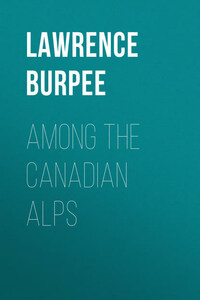The writer takes this opportunity of gratefully acknowledging his indebtedness to Mr. J. B. Harkin, Commissioner of Dominion Parks, Col. Maynard Rogers, Superintendent of Jasper Park, and Mr. Arthur O. Wheeler, Director of the Alpine Club of Canada, for valued assistance in gathering material for this book; to Mr. Walter D. Wilcox, Sir James Outram, Dr. A. P. Coleman, Dr. J. W. A. Hickson, Rev. George Kinney, Dr. Charles E. Fay and Mr. P. D. McTavish, for permission to quote from their books and articles on the Rocky Mountains; and to Miss Mary M. Vaux, Mrs. Mary T. S. Schäffer, Mr. W. H. P. Lett, Mr. Arthur O. Wheeler, Mr. H. W. Craver, Rev. George Kinney, Mr. P. D. McTavish, Mr. James F. Porter, Mr. P. L. Tait, Mr. John Woodruff, Mr. A. Knechtel, Messrs. G. and W. Fear, the Canadian Pacific Railway Company and the Grand Trunk Pacific Railway Company, for permission to reproduce photographs of Rocky Mountain scenery and climbing and other incidents.
Ottawa, CanadaOctober, 1914
I
THE LURE OF THE MOUNTAINS
WHAT is the peculiar charm of that mighty, snow-capped sea of mountains, whose stupendous waves tossed far into the heavens seem ever about to overwhelm the level wheat-fields of Western Canada? The lure of the mountains defies analysis, but it is surely there with its irresistible appeal to all in whom the spirit of romance is not quite dead. It stirs the blood strangely when, far out on the plains of Alberta, you get your first glimpse of the Canadian Alps – a line of white, glittering peaks just above the horizon, infinitely remote and ethereal, something altogether apart from the prosaic world about you of grain and cattle, neat farm-house and unsightly elevator.
As you follow the course of the sun, the peaks loom gradually up into the sky and dominate the scene, but still retain the atmosphere of another world. The rolling foothills in the foreground, like spent waves from the storm-tossed sea, seem tangible and comprehensible, but beyond and above the dark ramparts of the outer range, the towering outer wave of the mountains, float silvery outlines that seem to be the fabric of some other and purer world. Doubt may come with the marvellously clear and hardening light of the western day, but at sunrise, and peculiarly at sunset, the last shreds of uncertainty are swept away. Not of this earth is that dream of fairyland poised mysteriously in the upper air, glowing in exquisite tints, soft as a summer cloud; a realm of the spirit to which one might hope to journey over the path of a rainbow.
One who has seen this vision may not resist the insistent call to explore the mountain world, to discover what lies beyond the frowning battlements that guard this other realm. The call has been working in the hearts of men for generations. They came alone in the early days, each man fighting his way up through some doorway that led into the heart of the Glittering Mountains. Only the stout of heart might then win through, for this Wonderland was guarded close on every side. Pitfalls awaited the unwary. The explorer must cut his own trail through the wilderness, cross icy torrents, climb alpine passes, find a way through networks of fallen timber, face perils and discomforts every hour of the day. And yet there was something alluring, something that drew him on, and brought him back again to these high fastnesses; something that he could not understand, but that was none the less imperative. That same spell is as potent to-day, but most of the barriers are down, and where once men came singly or in twos and threes, paying heavily in labour and peril for the joys they found in the mountains, thousands now follow at just enough cost to themselves to give spice to the experience.
The history of the Canadian Alps, so far as White Men have had anything to do with it, dates back to the closing years of the French Régime in Canada. It is characteristic of the race that gave to the world such heroic figures as those of Champlain and La Salle and La Vérendrye, that while the infamous Bigot and the egotistical and brainless Vaudreuil were gambling away an empire in the New World, tireless and unselfish explorers were carrying the boundaries of that empire far out toward the setting sun.
It was in the year 1751 that the Chevalier de Niverville, with a small party of French voyageurs, pushed his way up the muddy waters of the Saskatchewan, and built Fort Lajonquière in the foothills of the Rocky Mountains. Niverville was not the discoverer of the mighty range that runs like a backbone throughout the length of North America. He had been anticipated some years before by a fellow-countryman, La Vérendrye, son of the patriotic explorer who had devoted his life to western discovery for the glory of his native land. Niverville, however, was the first White Man to look upon that portion of the mountains now known as the Canadian Rockies.
One wonders what his impressions were as he gazed out to the westward over that bewildering scene. As a Canadian officer he had served in the expeditions against the New England Colonies, and was therefore familiar with the mountains of New Hampshire and Vermont, as well as with his own Laurentian Hills, but what preparation were these for such awe-inspiring majesty? Range piled upon range to the westward, soaring up and up in vast towers and domes and spires, and extending north and south to the utmost limits of vision, they must have seemed to Niverville an impregnable fortification designed to bar all further progress in this direction.










